Looking for some elbow room this summer when travelling around? How about checking out the least visited U.S. national parks.
This list is a pretty eclectic mix – you might think they would all be located in remote areas or Alaska, but in fact many are near major population centers, and even within the city limits of some large cities! Granted, not all of them are parks in the vein of Yellowstone or the Great Smoky Mountains – one is a single building, and some monuments or historical sites are former manors or other properties preserved for their importance in history, not necessarily their natural beaty. But they are all under the National Parks system.
Below are numbers10 through 6 of least visited parks in the National Parks system in 2012. Tomorrow we’ll post the 5 least visited parks, and finally, we’ll quickly discuss the one park that had zero visitors last year (if it has 0 visitors, is it the least visited, or just not visited?) Anyway, as you think of places to visit on your next vacation, consider adding one of these off the beaten path places.
10. Sand Creek Massacre National Historic Site
- Visitors in 2012: 4,384
- Visitors Average (3 years): 4,127
- Area Size: 12,583 acres (5,092 ha)
- Location: The Sand Creek Massacre National Historic Site is located in Kiowa County, Colorado. It is about 170 miles (270 km) southeast of Denver and about 125 miles (200 km) east of Pueblo. The nearest city to this site is Eads, CO.
- How to Get There:
To access the site, just follow Colorado State Highway 96 east off Highway 287 near Eads, or west off Highway 385 at Sheridan Lake. If you are near Chivington, turn north onto County Road 54/Chief White Antelope Way or at Brandon, turn north onto County Road 59. Simply follow these roads to their intersections with County Road W. You will find the park entrance along CR W a mile east (right) of CR 54 or several miles west (left) of CR 59.
- Description:
The Sand Creek Massacre National Historic Site is an archaeological site that holds the remains of the notorious November 29, 1864 massacre where about 700 soldiers from the US military attacked a peaceful encampment of Cheyenne and Arapaho along Big Sandy Creek in the southeastern Colorado Territory that killed more than 150 native American Indians, most of whom were women, children and elderly.
This Historical Site was authorized by Public Law 106-465 on November 7, 2000 with the intention to recognize the national significance of the profound, symbolic, spiritual and controversial massacre in American history, as well as its ongoing symbolism to the Cheyenne and Arapaho people and the descendants of the massacre victims.
The park is open 7 days a week from April 1 to Dec 1, and Monday through Friday all other days.
- Activities:
The National Park Service offers free scheduled Ranger-led programs during hours of operation, from 9 am – 4 pm, April 1 – December 1, or by advance appointment during winter season. You can also join the Cheyenne and Arapaho tribes as they hold their annual Spiritual Healing Run at the Sand Creek Massacre National Historic Site, a multi-day run held in late November.
While you are at the site, try visiting nearby museums like the Cheyenne County Museum, Koshare Indian Museum, Kit Carson Museum, Kiowa County Museum and Big Timbers Museum.
Access is free, however there are no camping or other overnight facilities here.
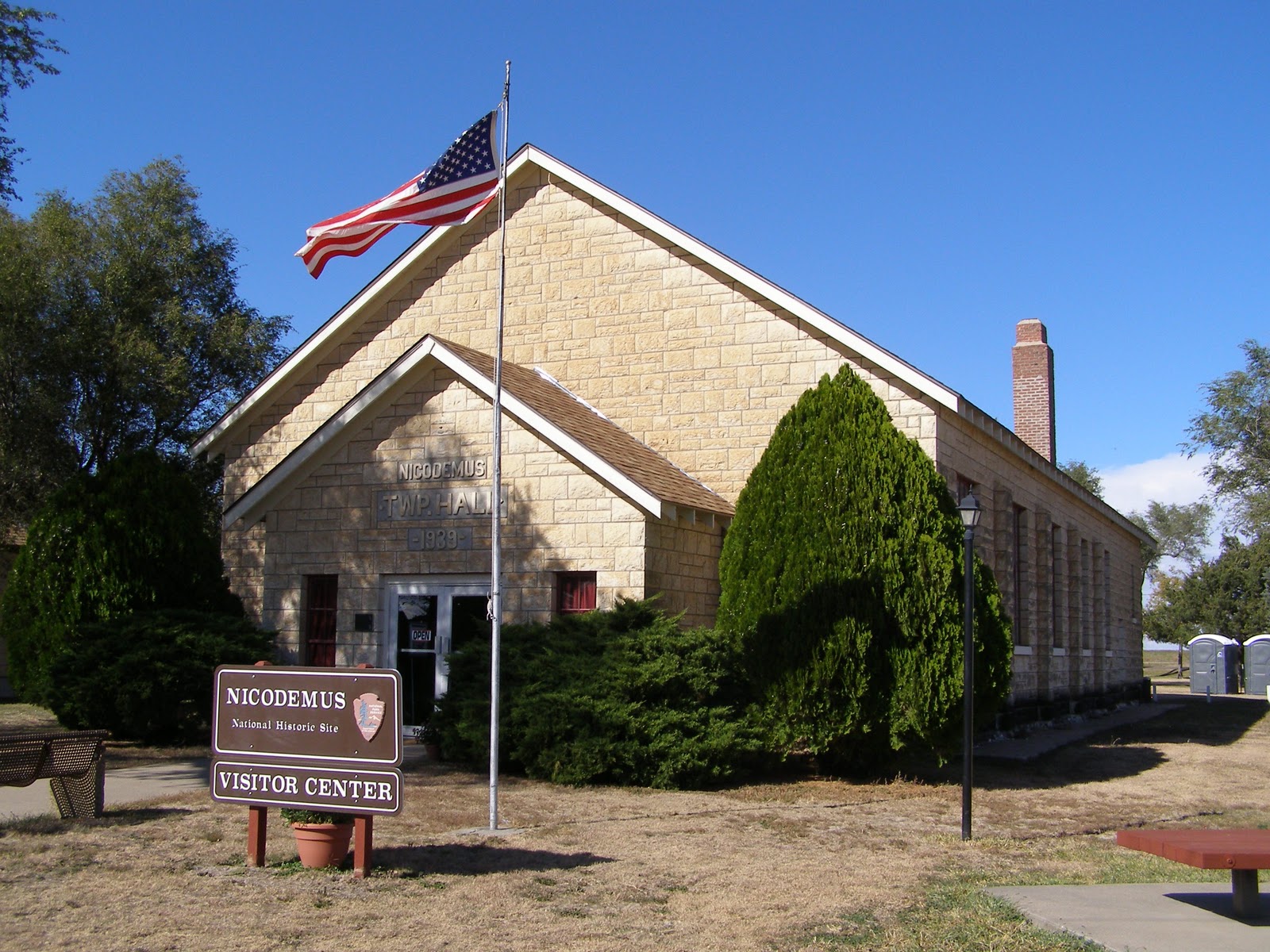 9. Nicodemus National Historic Site
9. Nicodemus National Historic Site
- Visitors in 2012: 3,505
- Visitors Average (5 years): 3,009
- Area Size: 161 acres (0.65 km2)
- Location: The Nicodemus National Historic Site is situated in the northwestern Kansas on Highway 24 between Hill City and Stockton. It is located in Nicodemus, KS.
- How to Get There:
This National Historic Site is easily accessible by road. If you are driving from Denver, take Interstate 70 east to Colby, then exit on Highway 24 (east) to Nicodemus .When travelling from Kansas City take Interstate 70 west to Hays and exit at Highway 183 north to Stockton, then west on Highway 24 to Nicodemus. Take the Interstate 80 toward Kearney to exit 257 once driving from Omaha.
- Description:
Being the oldest and sole remaining African American settlement west of the Mississippi River, the Nicodemus National Historic Site preserves, safeguards and showcases the only western town established by African Americans during the Reconstruction Period following the American Civil War. This site, which got its name from a legendary African-American slave who purchased his own freedom, symbolizes the involvement of African Americans in the westward expansion and settlement of the Great Plains. There are 5 buildings in this historic site:
- African Methodist Episcopal Church
- First Baptist Church
- Township Hall (now home to a temporary visitor center)
- Nicodemus School District #1 Schoolhouse
- St. Francis Hotel
- Activities:
Discover and learn the history of Nicodemus and African Americans in the West by taking a tour at their Visitor Center where you can view some exhibits or watch a short interpretive film about the history of the National Historic Site and how it was built. You can also enjoy Ranger led tours, available through appointment only.
Take a walk around the area and view the 5 historic buildings (mentioned above) which denote the physical expression of the five pillars of the African-American community: church, self-government, education, home, and business. All activities, along with access, are free.
 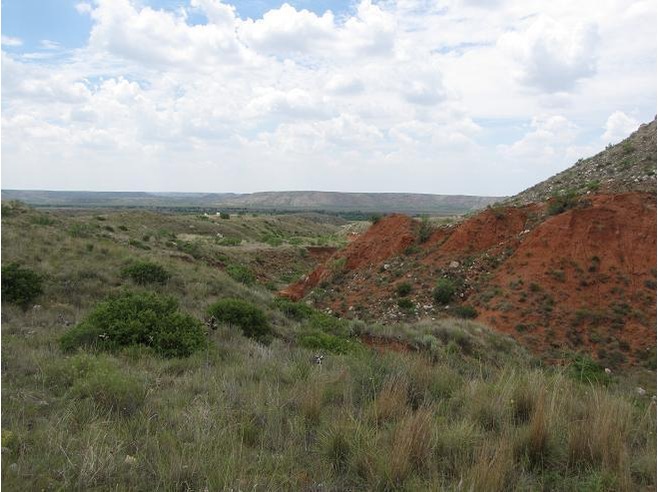 8. Alibates Flint Quarries National Monument
8. Alibates Flint Quarries National Monument
- Visitors in 2012: 3,383
- Visitors Average (5 year): 3,232
- Area Size: 1,371 acres (555 ha)
- Location: Alibates Flint Quarries is located in Potter County, Texas, USA, approximately 35 miles north of Amarillo, Texas which is the nearest city to the area.
- How to Get There:
This National Monument can be easily reached by car. If you are driving from I-40 in Amarillo, take the Lakeside exit north towards Lake Meredith National Recreation Area. It will be a hassle-free driving since Park Service signs will be visible. When you are travelling from Fritch, take TX 136 south seven miles and make a right turn on Cas Johnson Road.
- Description:
Alibates Flint Quarries National Monument is home to ancient flint quarries, with its signature flint being a rainbow hue of primarily maroon and white, with blue, brown, red, and sometimes yellow, mixed in a wrinkled pattern. This monument safeguards a mesa covered in a carpet of flint flakes which is thick enough that anyone visiting the area cannot walk without having to step on human generated flakes of the Alibates flint. Although these historical quarries were manually dug about 1,000 years ago, the gathering of flint from the mesa has been happening for 13,000 years. Take note that visiting this area requires advance reservation and will involve one mile of walking, an elevation gain of 170′ that will take about two hours.
- Activities:
Guided tours are the only activity available at this park, and are offered by park rangers throughout the year, with reservations highly recommended. Tours typically start at 10 A.M. and 2 P.M.This interpretive ranger-guided hiking involves touring of the Alibates Flint Quarries, located on the monument. During Texas Archeology Month in October, the National Monument also offers ranger-guided hikes to the Antelope Creek Ruins excavation site.
The Alibates Flint Quarries National Monument has a modern visitor contact station showcasing some exhibits, flint samples, a bookstore, and a theater, where you can watch the site’s award-winning 10-minute orientation film.
There are no fees for entrance or to go on the tours. However there is no camping nor overnight facilities.
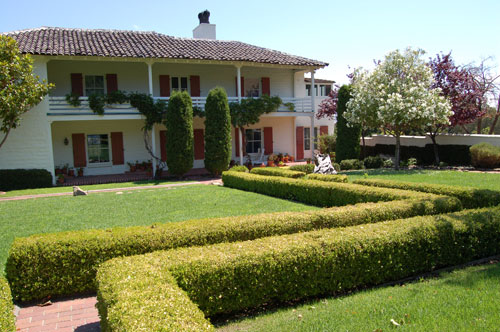 7. Eugene O’Neill National Historic Site
7. Eugene O’Neill National Historic Site
- Visitors in 2012: 2,789
- Visitors Average (5 years): 2,831
- Area Size: 158.6 acres (64.2 ha)
- Location:Â Kuss Road in Danville, California, about 31 miles east of San Francisco, California.
- How to Get There:
Getting to Danville, CA can be done via land or air travel, depending on your location. It is just an hour away from the San Francisco airport. However, visitors are prohibited to drive using their personal/private vehicles to the site due to the location of the park. Instead, visitors must take the free National Park Service shuttle from the town of Danville to tour the historic home and grounds of the Eugene O’Neill NHS. Visitors can pick up the shuttle bus at 205 Railroad Ave, Danville, CA. Currently, due to sequestration, the shuttle operates at 10 A.M. and 12 and 2 P.M. Fridays and Saturdays.
- Description:
This National Preserve is previously home to America’s only Nobel Prize winning playwright, Eugene O’Neill. At the height of his career, O’Neill chose to live in this historic house and isolated himself from everyone else. Within the walls of this Tao house, the famous playwright penned his final and most memorable plays Long Day’s Journey Into Night, A Moon for the Misbegotten and The Iceman Cometh.
This Tao House, which features a unique blend of Chinese and Spanish architecture, filled with Oriental furnishings and decorations, was built and designed by O’Neill himself together with his third wife, Carlotta. The winning playwright called this abode his “final home and harbor.â€
- Activities:
There are two tour options available in this National Preserve:
Ranger Guided Tours – offered currently on Fridays only due to the sequestration either 10:00 am or 2:00 pm and available via advance reservation only (link to reservation info). This 2-1/2 hour tour visit is free with transportation to/from the park.
Self-Guided Tours -You can enjoy this 1¾ hours visit every Saturday. No advance reservations are needed and shuttles leave from downtown Danville at 10:00 am, 12:00 pm and 2:00 pm on a first-come, first-served basis.
All transportation, access, and tours are free.
If you are looking for a more activities in the area, you can tour the preserve’s 13-acre grounds, accessible from hiking and mountain biking trails in the Las Trampas Regional Wilderness (note that portions of Las Trampas require a hiking permit). Bird watching is another popular outdoor activity available here.
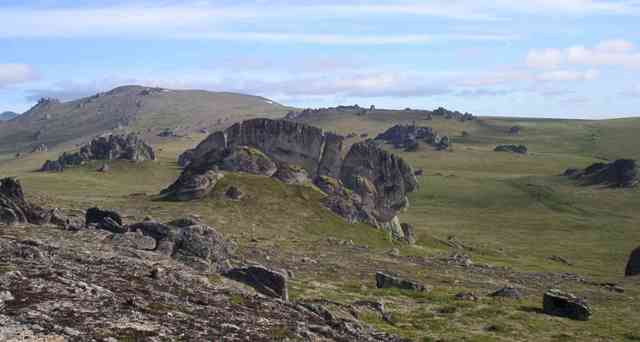 6. Bering Land Bridge National Preserve
6. Bering Land Bridge National Preserve
- Visitors in 2012: 2,642
- Visitors Average in 5 years: 1,849
- Area Size: 2,697,391 acres (1,091,595 ha).
- Location: The preserve lies on the northern side of the Seward Peninsula, Alaska, USA. The nearest city in this area is Kotzebue.
- How to Get There:
Despite its large area size, the preserve has limited access and there are no roads that directly lead to it. You can use bush planes, small boats or travel on foot when visiting the preserve in the summer season. Try checking the NPS list of ski planes operators that have permission to land in the preserve. On the other hand, snowmobiles or dog sleds can be used to access the area during winter.
- Description:
With its remote location and limited access, The Bering Land Bridge National Preserve is one of the least visited parks in United States. This National Preserve is a historic location as it protects the ‘Bering Land Bridge’ (also known as Beringia) which archeologists believed to be the bridge that connected Asia with North America more than 13,000 years ago during the Pleistocene ice age. This is the bridge that humans used to migrate from Asia to the America.
Scenic archaeological sites and a wide array of geological features are present in the preserve. Visitors will have the chance to explore the vibrant wilderness of ancient lava flows, hot springs, the largest maar lakes in the world and of course, experience via live pictures that signs of Pleistocene ice age life.
- Activities:
The preserve offers tons of exciting activities to its visitors such as hiking, backpacking, nature observation, photography, camping, and coastal boating. Â Hunting and fishing are also allowed provided you have the Alaska hunting and fishing licenses required when doing these activities. During winter, snowmobiling, dog sledding and cross-country skiing are ideal activities to enjoy in the preserve.
You can also opt to visit their visitor center in Nome, Alaska and watch some of the more than 170 species of birds in the area, as well as enjoy some wildlife watching as the preserve is home to numerous animals, including rare Asiatic species. Fly out to Serpentine Hot Springs and then spend a night or two in their bunkhouse while you hike among the huge granite tors that surround the springs and then calm yourself in the warmth of its bath house.
Lastly, discover the remains of the gold rush era and evidence of ancient Inupiaq life by exploring the preserve itself, as well as visiting its surrounding areas like the Native villages which give visitors the opportunity to study and learn their traditional lifestyles, as well as the historic reindeer herding.
Next, we’ll look at the five least visited National Parks properties, and finally the one park that had zero visitors last year.

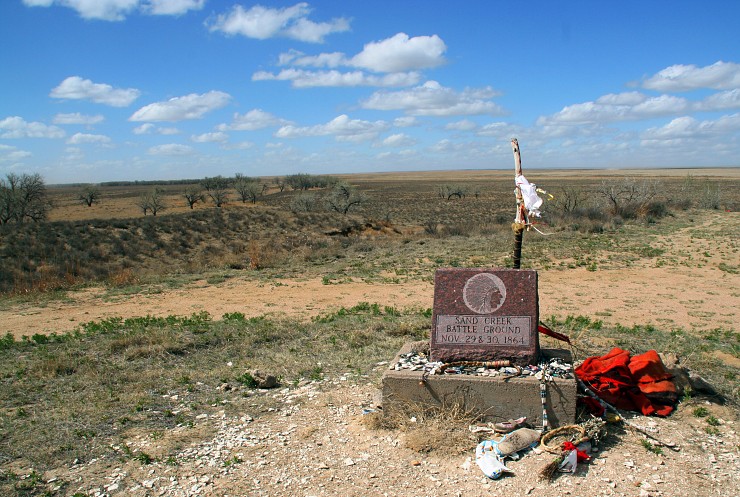
Let me right away grab your current rss feed because i are not able to to locate ones e-mail registration web page link as well as e-newsletter services. Do you have almost any? Remember to allow me to recognise to ensure that I could truthfully subscribe. Appreciate it.
That is really interesting. It is amazing how many beautiful places there are around the country to go camping. I like the idea of going somewhere a bit less crowded to truly relax and take in the nature. Great post!
There are some interesting sites on this list. Have you been to all of these parks? I’m wondering if there’s much to see at some of the smaller sites. I’ve visited another massacre site before and it’s really just a marker that describes the events that took place there. Still a good experience as it was right by a river and there was a peaceful feeling there that one maybe wouldn’t expect.
Hi this is the first time i have been on your blog got a referral to your site why on greener camper. This post intrigued me. I am from the uk and the only national parks i have done in the usa are the most common ones around Vegas. Zion, Grand CAnyon Bryce and monument Valley. An absolute brilliant trip the national parks were amazing i loved all of them. Walking 6 miles down in to the Grand Canyon was the high light though.
Looking to make another trip and the idea was to get more off the beaten track and do a road trip and probablysome internal flights to some of the lesser known sites and parks. This post has given me some great ideas going to have a look at your second half of the post now.
great info thanks lee
No problem Lee. Just remember to check the hours of operation for most of these parks. Some have very limited or seasonal hours.